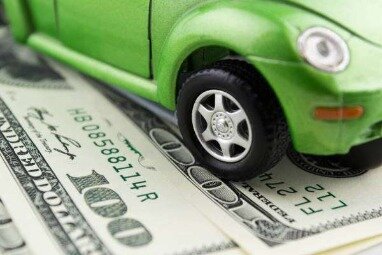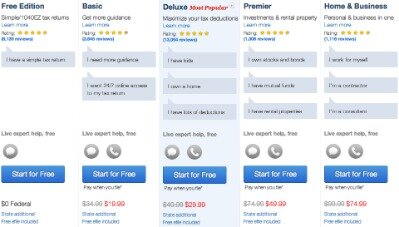MENUMENU
Contents:


The double declining balance method is one of several acceptable methods that can be used to depreciate fixed assets. While the double declining balance method is relatively simple, it may be more complex than other depreciation methods, such as the straight-line method. This may require businesses to spend more time and resources calculating yearly depreciation expenses.
Sum-of-years digits is a depreciation method that results in a more accelerated write off of the asset than straight line but less than double-declining balance method. As an alternative to systematic allocation schemes, several declining balance methods for calculating depreciation expenses have been developed. If you file estimated quarterly taxes, you’re required to predict your income each year. Since the double declining balance method has you writing off a different amount each year, you may find yourself crunching more numbers to get the right amount.
For example, last year, the actual depreciation expense as per the depreciation rate should have been $13,422 but kept at $12,108.86 to keep the asset at its estimated salvage value. So, the depreciation expense is calculated in the last year by deducting the salvage value from the opening book value. The double declining balance method is an accelerated method since a large part of the cost is expensed at the beginning of the life of the asset. The other downside can be a reduction in net income due to the increased depreciation expense.

The double declining balance depreciation rate is twice what straight line depreciation is. For example, if you depreciate your machine using straight line depreciation, your depreciation would remain the same each month. While some accounting software applications have fixed asset and depreciation management capability, you’ll likely have to manually record a depreciation journal entry into your software application. The units of production method is generally considered the most accurate depreciation method based on the asset’s actual usage or productivity. The double-declining balance and straight-line methods may need to be more accurate in certain situations, as they need to consider the asset’s actual usage and productivity. On the other hand, this method is more complicated to calculate than straight line depreciation.
Under the DDB method, we don’t consider the salvage value in computing annual depreciation charges. Instead, we simply keep deducting depreciation until we reach the salvage value. In these cases, it may be more appropriate to use a different depreciation method, such as the Straight-Line Method or the Units of Production Method. The double declining balance method is relatively simple and does not require complex calculating factors such as the asset’s residual or estimated disposal value. To calculate depreciation using the Double Declining Balance Method, the asset’s initial cost is multiplied by a depreciation rate, which is typical twice the straight-line depreciation rate. The resulting amount is then subtracted from the asset’s remaining book value to determine the new book value.
Hence, our calculation of the depreciation expense in Year 5 – the final year of our fixed asset’s useful life – differs from the prior periods. With our straight-line depreciation rate calculated, our next step is to simply multiply that straight-line depreciation rate by 2x to determine the double declining depreciation rate. The steps to determine the annual depreciation expense under the double declining method are as follows. Carrying ValueCarrying value is the book value of assets in a company’s balance sheet, computed as the original cost less accumulated depreciation/impairments. It is calculated for intangible assets as the actual cost less amortization expense/impairments.
Double declining balances are used to calculate the depreciation of an asset over its useful life in a method known as the double declining balance depreciation method. The two most common accelerated depreciation methods are double-declining balance and the sum of the years’ digits. Here’s a depreciation guide and overview of the double-declining balance method.
So, after we record year 8 depreciation, the book value of the work truck is now $9,976.18. So, after we record year 7 depreciation, the book value of the work truck is now $12,464.27. So, after we record Year 2 depreciation, the book value of the work truck is now $33,620.
However, if the notes receivable later goes on to sell that asset for more than its value on the company’s books, it must pay taxes on the difference as a capital gain. In contrast to straight-line depreciation, DDB depreciation is highest in the first year and then decreases over subsequent years. This makes it ideal for assets that typically lose the most value during the first years of ownership. And, unlike some other methods of depreciation, it’s not terribly difficult to implement. The DDB depreciation method can lead to greater depreciation recapture if you sell an asset before the end of its useful life.
This is unlike the straight-line depreciation method, which spreads the cost evenly over the life of an asset. The double declining balance method of depreciation reports higher depreciation charges in earlier years than in later years. The higher depreciation in earlier years matches the fixed asset’s ability to perform at optimum efficiency, while lower depreciation in later years matches higher maintenance costs. However, computing the double declining depreciation is very systematic. It’s ideal to have an accounting software program that can calculate depreciation automatically.
Plant Assets: What Are They and How Do You Manage Them?.
Posted: Fri, 05 Aug 2022 07:00:00 GMT [source]
This approach is reasonable when the utility of an asset is being consumed at a more rapid rate during the early part of its useful life. It is also useful when the intent is to recognize more expense now, thereby shifting profit recognition further into the future . However, the management teams of public companies tend to be short-term oriented due to the requirement to report quarterly earnings (10-Q) and uphold their company’s share price. Since public companies are incentivized to increase shareholder value , it is often in their best interests to recognize depreciation more gradually using the straight-line method.
This is greater than the $4,600 in depreciation expense annually under straight-line depreciation. At the beginning of the first year, the fixture’s book value is $100,000 since the fixtures have not yet had any depreciation. Therefore, under the double declining balance method the $100,000 of book value will be multiplied by 20% and will result in $20,000 of depreciation for Year 1.
The articles and research support materials available on this site are educational and are not intended to be investment or tax advice. All such information is provided solely for convenience purposes only and all users thereof should be guided accordingly. However, it’s not as easy to calculate, and you must refigure your depreciation expense each period.
The double declining balance method describes an approach to accounting for the depreciation of fixed assets where the depreciation expense is greater in the initial years of the asset’s assumed useful life. Double declining balance depreciation allows for higher depreciation expenses in early years and lower expenses as an asset nears the end of its life. Calculate the depreciation expenses for 2011, 2012 and 2013 using 150 percent declining balance depreciation method. Each of the three methods may be more or less suitable for different types of assets, depending on the characteristics of the asset and the business’s needs. For example, the double declining balance method may be more suitable for assets with a short useful life or expected to generate significant revenues or cost savings in the early years of their use. The straight-line method may be more suitable for assets with a long useful life or a stable level of productivity.
First, you could realize that your salvage value estimate is just that—an estimate. You’ll have to make an adjusting entry when you sell the company truck to show the realized gain / realized loss. The chances that you will guess the selling price right on the money are pretty low unless you already have a contract in place. The method is a little more complicated than the straight-line method.
The journal entry will be a debit of $20,000 to Depreciation Expense and a credit of $20,000 to Accumulated Depreciation. The most basic type of depreciation is the straight line depreciation method. So, if an asset cost $1,000, you might write off $100 every year for 10 years. A variation on this method is the 150% declining balance method, which substitutes 1.5 for the 2.0 figure used in the calculation. The 150% method does not result in as rapid a rate of depreciation at the double declining method.
How to Obtain Tax Incentives for Investments in Indonesia’s Marine ….
Posted: Tue, 07 Mar 2023 08:00:00 GMT [source]
Toward the end of its useful life, the vehicle loses a smaller percentage of its value every year. The double-declining balance method multiplies twice the straight-line method percentage by the beginning book value each period. Because the book value decreases each period, the depreciation expense decreases as well. In the final period, the depreciation expense is simply the difference between the salvage value and the book value. How do you calculate the double-declining balance method of depreciation? What are the pros and cons of using the double-declining balance method?
The depreciation rate is typical twice the straight line, calculated by dividing one by the number of years in the asset’s useful life. For example, if an asset has a useful life of 5 years, the straight-line depreciation rate would be 1/5, or 20%. The Double Declining Balance Method depreciation rate would be 2 x 20%, or 40%. This is the asset’s estimated value at the end of its useful life after all depreciation has been taken.
Use this calculator to calculate the accelerated depreciation by Double Declining Balance Method or 200% depreciation. For other factors besides double use the Declining Balance Method Depreciation Calculator. 1- You can’t use double declining depreciation the full length of an asset’s useful life. Since it always charges a percentage on the base value, there will always be leftovers.

Using the Double Declining Balance Method, the restaurant calculates an annual depreciation expense of $3,200 (20,000 x 0.2 x 2). The system is expected to have a useful life of 5 years and a salvage value of $500. Using the Double Declining Balance Method, the store calculates an annual depreciation expense of $800 (5,000 x 0.2 x 2). The choice of depreciation method can impact revenues on the income statement and assets on the balance sheet. In the above example, we assumed a depreciation rate equal to twice the straight-line rate. However, many firms use a rate equal to 1.5 times the straight-line rate.
Declining balance is a method of computing depreciation rate for the value of an asset. The declining balance method is also known as reducing balance method or diminishing balance method. It is an accelerated depreciation method that results in larger depreciation amounts during the earlier years of an assets useful life and gradually lower amounts in later years. Under US GAAP, the double declining balance method is covered by the Financial Accounting Standards Board’s Accounting Standards Codification Topic 360, Property, Plant, and Equipment.
Users of this method start by calculating the amount allowed under straight-line depreciation for year one and then doubling it. The next year, they calculate remaining depreciable balance, divide by remaining years and multiply by two. They do this each year until the final year of the asset’s useful life, where they depreciate any remainder over the asset’s salvage value. Double declining balance depreciation is an accelerated depreciation method. DDB depreciates the asset value at twice the rate of straight line depreciation. US GAAP and IFRS allow the double declining balance method to be a valid depreciation method for fixed assets.

"Sky Tour" company has successfully been working in the tourist market of Tajikistan since February 2011. Despite a relatively short period of activity, the company has thousands of organized trips and satisfied customers. We provide a wide range of tourist services, from excursions around Tajikistan, to round-the-world travel. We organize travel for every taste and depending on the wishes, we select the most ideal variant for the tourist. Managers of the company "Sky Tour" are highly qualified professionals, experts in their work and work execution is impeccable. We track every stage of the journey of our tourists and in the event of unforeseen situations we quickly resolve the issues that have arisen. "Sky Tour" company successfully cooperates with tour companies in all regions of Tajikistan, and many Tour Operators in all corners of the world which gives an opportunity to expand the range of services and choice of countries for recreation. Our goal is to make your trip highly comfortable, safe, and interesting. "Sky Tour" company is a member of the TATO (Tajik Association of Tour Operators) and is accredited with the Ministry of Foreign Affairs of the Republic of Tajikistan.